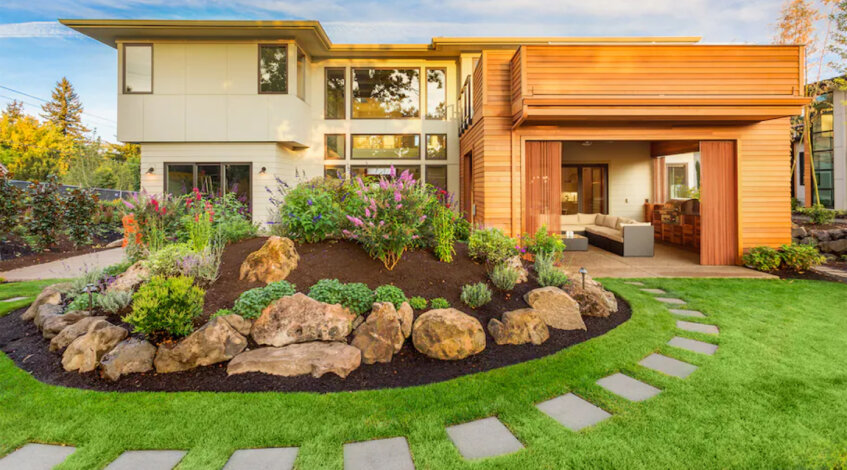Introduction
Designing a picturesque, functional, and sustainable landscape is an art form that requires skill, knowledge, and an understanding of the natural environment. This is particularly true in Canada, where diverse geographical features and distinct seasonal changes present unique challenges and opportunities. Whether you aim to enhance your residential property or create a public green space, here are expert tips and tricks to assist you in mastering all aspects of landscape design in Canada.
Know and Understand the Local Climate and Conditions
In Canada, landscape design is significantly influenced by the region’s climate and eco-system. From the mild coastal regions of British Columbia to the rugged terrains of Alberta, and the frosty northern areas of Yukon, each place has distinct weather conditions and soil types. Understanding these can help you make informed decisions about plant selection, irrigation needs, and soil enhancement strategies.
Paying attention to the Sun and the wind’s directions at various times of the day for your area should also inform your landscape design. For instance, placing a patio on the western side of your house may subject you to intense afternoon sun, potentially spoiling your leisure time.
Plan Based on Usage
Before you start designing your landscape, identify what the space is primarily going to be used for. Is it a playground for kids, a vegetable garden, a tranquil place to relax, or a barbecue spot for socialization? An effective landscape design satisfies the purpose while being aesthetically pleasing and environment-friendly.
Remember to consider factors, such as accessibility, privacy needs, maintenance requirements, and safety while planning. For instance, including native plants can help preserve biodiversity and require less maintenance, as they are resilient to local pests and diseases.
Start Small and Dream Big
Tempting as it may be to overhaul the entire landscape at once, experienced designers recommend starting small and gradually building upon initial successes. Patience, incremental additions, and adjustments over time can let your landscape evolve and help prevent costly mistakes.
Sketching out a master plan of how you envision your landscape in the future can guide you in this step-by-step approach. Use it to break down the larger vision into smaller, manageable projects, ensuring that each one aligns with the overarching theme.
Accentuate Your Home’s Architecture
Expert landscape designers emphasize that your outdoor style should not be an entity separate from the architectural style of your home – rather, they should complement each other.
Think of your house as the focal point of the landscape and choose colors, textures, and scales for your plants, garden artifacts, pathways, and outdoor furniture that uplift its aesthetics and your overall property.
Create Visual Interest with Form, Color, and Texture
A harmonious blend of form, color, and texture in your landscape can create a visual spectacle throughout the year, not just in spring and summer. Deciduous and evergreen trees, flowering plants, ornamental grass, and conifers contribute different shapes (form), hues (colors), and surface quality (textures) that can be orchestrated for multi-seasonal interest.
In parts of Canada where winters can be harsh and extensive, the use of hardscaping, such as stones, walls, sculptures, can add character to your landscape when most plants are dormant.
Consider Professional Help
If your budget allows, hiring professional landscapers can be an excellent investment. They bring specialized knowledge of landscape design principles, plant materials, construction techniques, and regional ecology.
Furthermore, professionals can evaluate site conditions, help you choose sustainable materials, and offer creative solutions that you might not have considered.
Conclusion
Landscape design is much more than planting a few trees and installing walkways. It is about creating an outdoor space that enhances your home’s aesthetic beauty, increases its value, provides functional outdoor space, and supports the local ecology. By understanding local conditions, planning based on usage, starting small, harmonizing with architecture, creating multi-seasonal interest and obtaining professional help, you can create a landscape in Canada that is both stunning and sustainable. Remember, a well-crafted landscape is an evolving masterpiece that changes with the seasons, grows over the years, and continues to delight and surprise.

